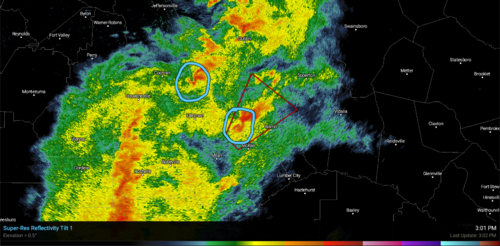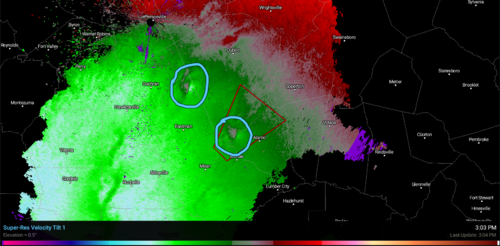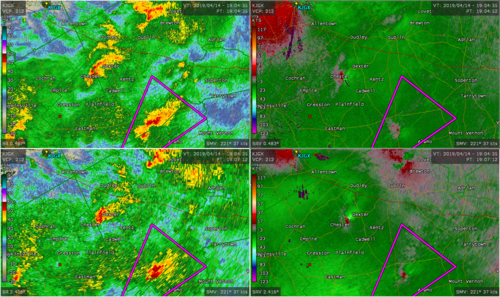sam.leisenring
Enthusiast
During Sunday's severe weather, I noticed these two strange looking thunderstorms on radar in central Georgia. As you can see, one was tornado warned and the other was not. It's weird to me because they both appear to be rotating clockwise, which is in the opposite direction that you would expect. Can someone confirm this or am I just stupid XD
Attachments
Last edited:



